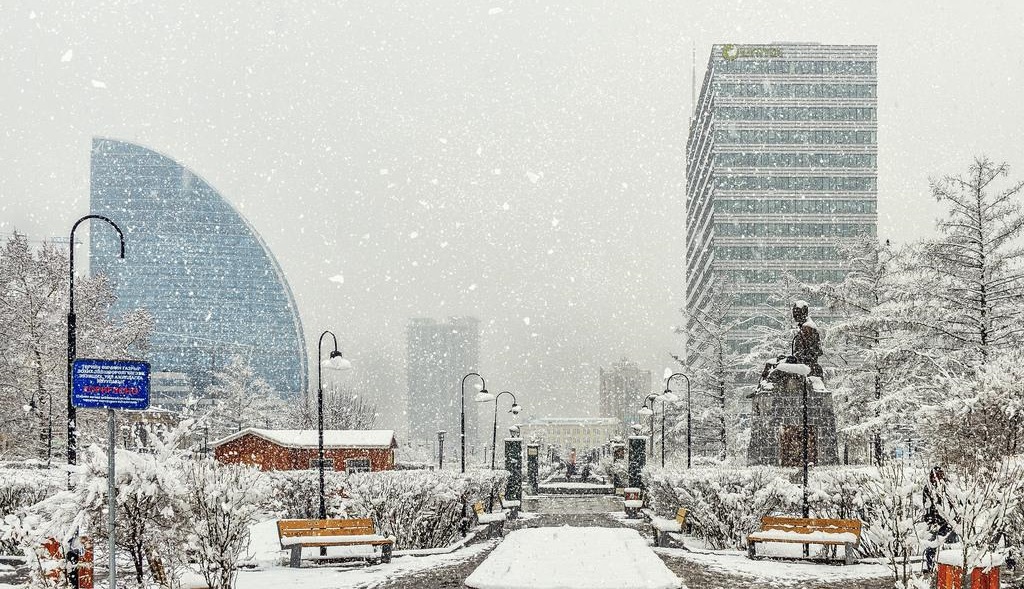8:33 PM Mongolia’s Changing Climate: Challenges and Innovations in Adaptation | |

Mongolia’s climate, defined by its extreme continental nature, is undergoing significant transformations due to global warming. These changes present both challenges and opportunities for the country, known for its vast steppes, arid deserts, and nomadic traditions. Mongolia’s climate challenges underscore the urgent need for adaptation and innovation. From leveraging renewable energy in the Gobi to integrating traditional knowledge in grassland restoration, Mongolia is showing resilience in the face of rapid environmental change. As global temperatures rise, this unique nation’s experiences offer valuable lessons for the world. 1. Warming at Twice the Global RateRecent climate studies reveal that Mongolia's average temperature has risen by 2.25°C since the early 20th century, nearly twice the global average. The warming has led to:
2. Dzud: A Perilous Climate PhenomenonThe dzud, a natural disaster unique to Mongolia characterized by harsh winters following dry summers, has become more frequent and severe. This phenomenon devastates livestock, a cornerstone of Mongolia’s economy and culture. Response:
3. Glacial Retreat in the Altai MountainsGlaciers in Mongolia’s Altai Mountains, a critical water source for rivers and local communities, are retreating at alarming rates. A study from 2023 found that 30% of the region’s glaciers have disappeared in the last 70 years. Impact: The loss of glaciers threatens water availability for agriculture, hydropower, and rural livelihoods. 4. Renewable Energy: A Bright Future in the GobiMongolia is capitalizing on its sunny climate by expanding renewable energy projects in the Gobi Desert. The nation recently inaugurated Asia’s largest solar-wind hybrid power plant, capable of generating electricity for over a million households. Goal: To increase renewable energy production to 30% of the national grid by 2030. 5. Sandstorms on the RiseThe frequency and intensity of sandstorms in Mongolia have surged, affecting not only Mongolia but also neighboring countries like China and South Korea. These storms are linked to desertification and soil degradation. Mitigation Efforts:
6. Lake Khövsgöl Under ThreatLake Khövsgöl, Mongolia’s largest freshwater body, is experiencing changes due to rising temperatures and human activity. Ice cover, crucial for local ecosystems and traditional winter transportation, now forms later and melts earlier. Solutions in Action: Conservationists are implementing stricter regulations on tourism and fishing, alongside reforestation projects in surrounding areas. 7. Reviving Grasslands with Traditional KnowledgeTo combat the degradation of Mongolia’s iconic grasslands, local communities are turning to traditional herding practices. Rotational grazing, informed by centuries of nomadic wisdom, is being combined with modern scientific research to restore pastures. Innovation: Pilot projects using drones to monitor grassland health are showing promising results. 8. Urban Heat Islands in UlaanbaatarMongolia’s capital, Ulaanbaatar, is grappling with the urban heat island effect, where densely populated areas experience significantly higher temperatures than surrounding regions. Combined with air pollution from coal-based heating, the city faces a severe environmental challenge. Innovations:
9. Nomads and Climate ResilienceMongolia’s nomadic herders are on the frontlines of climate change. Despite the challenges, many are adapting through innovative practices:
10. International Collaboration on Climate ResearchMongolia has become a hub for international climate research, with scientists studying its unique ecosystems to understand global patterns. Recent collaborations focus on:
| |
|
| |
| Total comments: 0 | |